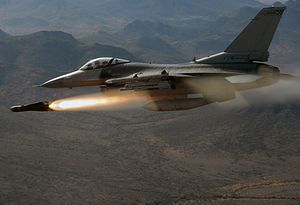The U.S. Department of State has approved the possible sale of 89 AGM-65G-2 Maverick missiles, 60 AIM-9X-2 Sidewinder missiles, and related support to South Korea, according to two separate press releases published by the U.S. Defense Security Cooperation Agency (DSCA) — the Pentagon’s lead agency when it comes to arms sales to allied nations — on February 1.
The two missile sales, which also include missile containers and other related elements of support, are estimated to be worth $140 million, with U.S. defense firm Raytheon as the principal contractor in both cases. The sales will still need to be approved by the U.S. Congress before entering final contract negotiations.
“It is vital to U.S. national interests to assist our Korean ally in developing and maintaining a strong and ready self-defense capability. This sale increases the ROK’s capability to participate in Pacific regional security operations and improves its national security posture as a key U.S. ally,” according to a DSCA statement.
The Republic of Korea Air Force (ROKAF) has both weapons already in its inventory. The AGM-2 Maverick is a precision-attack ground-to-air tactical missile designed for close air support, whereas the AIM-9X-2 Sidewinder is an infrared tracking short-range air-to-air and surface-to-air missile. The missiles can be carried by ROKAF F-15K Slam Eagle multi-role fighter jets and the KF-16, a South Korean variant of the General Dynamics F-16 Fighting Falcon.
As I reported previously (See: “South Korea: Upgraded F-16s Capable of Striking Key North Korean Targets”), the ROKAF currently operates 170 KF-16C/D Block 50/52 fighter aircraft, 134 of which will be undergoing extensive modernization and upgrades including arming the aircraft with bombs (e.g., the GBU-31 Joint Direct Attack Munition air-to-ground guided bomb) capable of destroying key underground targets in North Korea. The ROKAF started acquiring 61 F-15Ks, an advanced variant of Boeing’s F-15E Strike Eagle, beginning in 2005.
The U.S. Air Force will also deploy 12 F-16 fighter jets to Osan Air Base, located approximately 48 kilometers south of Seoul, in February, according to a recent U.S. Pacific Command press release. “The U.S. Air Force routinely deploys fighter aircraft to the region to provide U.S. PACOM and Pacific Air Forces with Theater Security Packages, which help maintain a deterrent against threats to regional security and stability,” the statement reads.
The U.S. State Department cleared the weapons sales prior to the first official visit of the new U.S. secretary of defense, retired Marine Corps Gen. James Mattis, to South Korea in early February. The new U.S. secretary of defense and South Korea’s acting president, Prime Minister Hwang Kyo-ahn, reiterated their commitment to deploy an advanced U.S. missile defense system on the Korean peninsula, the so-called the Terminal High Altitude Area Defense (THAAD).

































